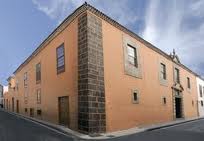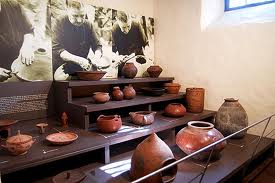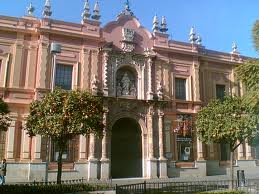Tenerife Art and History Museums
If you are thinking of going to Tenerife and are looking for cultural activities we suggest a visit to this and other Tenerife museums.
Tenerife History and Anthropology Museum

Where:
Casa de Carte: Calle del Vino 44, 38270
Casa de Lecaro: Calle San Agustín 20 and 22, 38201
Opening hours: Tuesday to Sunday from 9 am to 7 pm. Closed on Monday, and December 24, 25 and 31, and January 1 and 6
History and anthropology, originally united in the task of explaining human nature, eventually took separate paths to interpret the past and the present. Now they join once more in the attempt to understand a society that has transformed at an ever faster pace in the last decade, seeking to fit its past and its historical evolution.
The Tenerife History and Anthropology Museum responds to the current trends of collaboration between both disciplines, in knowledge as well as in the museum territory. From this perspective, the museum seeks to offer, through its collections, exhibitions and activities, a broader and richer view of history and culture of Tenerife island.

Acknowledging the existence of different interpretations of the past and the use of collective memory in contemporary identity processes, the Tenerife History and Anthropology Museum takes a step away from essentialist conceptions of culture, to show the more complex and dynamic character of cultural manifestations and social practices in the past and present. It is, therefore, sensitive to ideological pluralism and favours the democratic culture. The museum aspires to be a space for social integration and intercultural dialogue, taking as main reference the ethnographic past and present of the island.
The museum has two headquarters in La Laguna, one in the municipal centre and the other in Valle de Guerra. Both present an attractive exhibition programme, coordinated with a variety of cultural and didactic activities. Collections, exhibitions and activities are conceived as a contribution, such that both locals and visitors alike can identify the continuity between the present and the past, dissipating the notion that there is an abyss between tradition and modernity
Santa Cruz de Tenerife Fine Arts Museum
Where: Calle José Murphy, 12 (Plaza del Príncipe) - Santa Cruz de Tenerife
Opening hours: Tuesday to Friday from 10 am to 8 pm. Saturday and Sunday from 10 am to 3 pm. Free entrance

The origin of the museum dates back to 1840, when the City Hall of Santa Cruz de Tenerife decided to make some chests to store the flags used in the battle won against Admiral Nelson and the British Navy in 1797. The neoclassicist building was erected in 1929 by architect Eladio Laredo. The exterior is decorated with ten busts of different illustrious characters from Tenerife, among them Angel Guimerá (poet and playwright), Antonio de Viana (poet), Agustín de Betancourt (engineer) and Valentín Sanz (painter).
The Santa Cruz de Tenerife Fine Arts Museum has fourteen rooms and boasts its own collection, as well as a deposit of artworks from El Prado Museum in Madrid. The exhibition comprises everything from Flemish painting of the 16th century to paintings from the 20th century, as well as a sculpture and minor art. One of its most remarkable artworks is the Nava and Grimon tryptich by Flemish artist Pieter Coecke. It also has artworks by José de Rivera, Francisco de Madrazo and Joaquín Sorolla, among others. Important Canary Island artists, such as Cristóbal Hernández de Quintana, Gaspar de Quevedo and Juan de Miranda are present in a collection.



